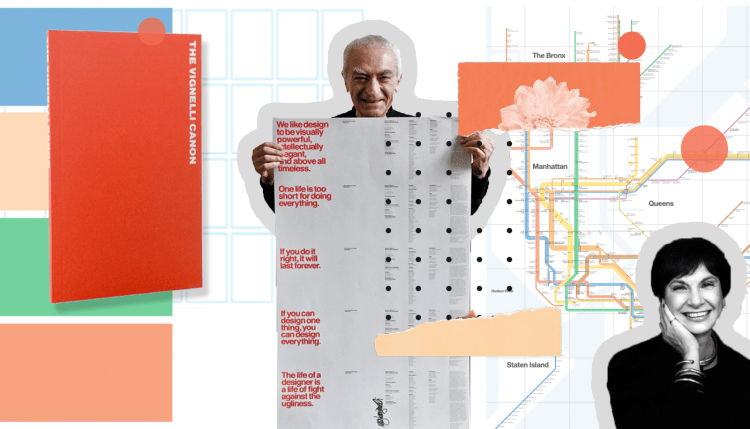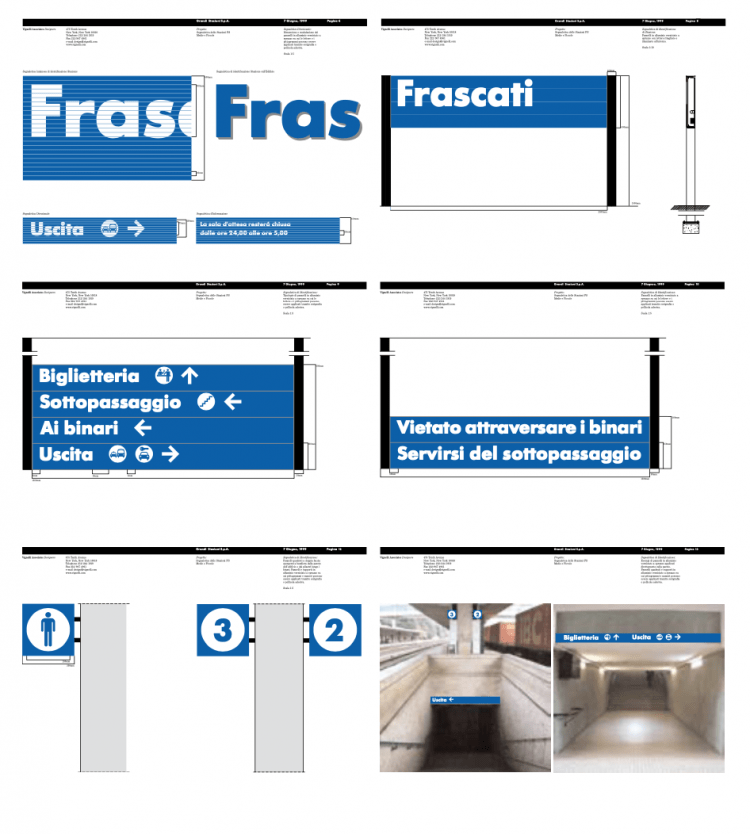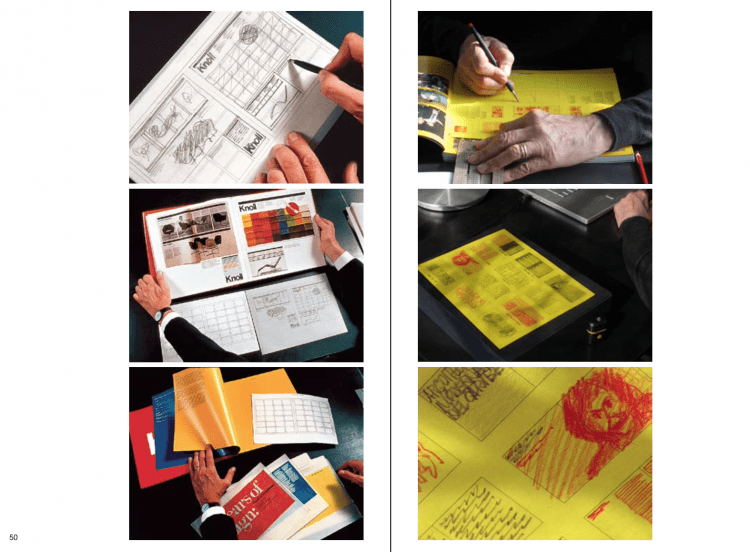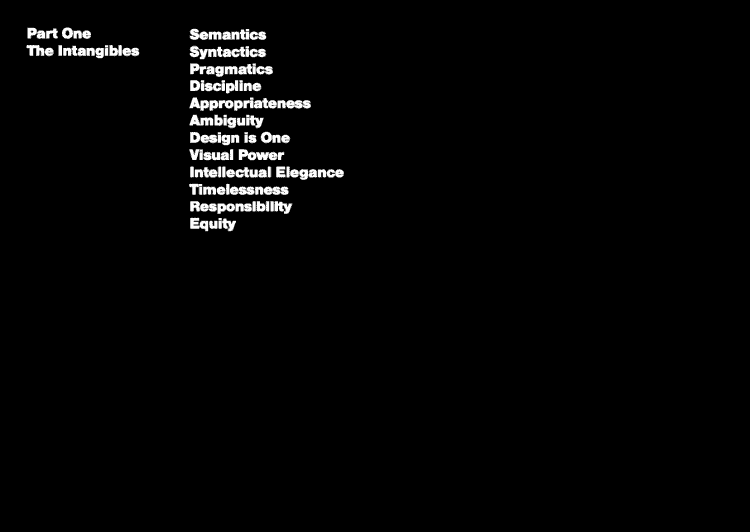The famous Italian designer Massimo Vignelli allows us a glimpse of his understanding of good design in this book
I was scrolling down my documents and I suddenly found my Industrial Design Bachelor thesis. I opened it to awaken both a sense of adrenaline and discomfort (just to stupidly test my nerves) and to check if I would have pursued the project in the exact same way I did three years ago.

“Creativity needs the support of knowledge to be able to perform at its best” Massimo Vignelli, The Vignelli Canon, 2009.
For the Introduction section of the book, I chose the melancholy excerpt of a conversation (INVENTARIO - Paolo Ulian, Interview with Marco Romanelli, Milan, 2011) between the Italian designer who has inspired a great part of my critical thinking about Design and my thesis as well, Paolo Ulian, and his interviewer and friend Marco Romanelli, about what happens at the very beginning of his design process.
P.U. For me, it is a moment of great suffering. A slow and very long moment. Let's say it takes at least 70% of the total time I will devote to that project. Apparently, it is dead time in the sense that I do nothing! I'm sitting in my room, and I think.
M.R. Don't you draw, don't do researches, don't cut-outs, don't models? Are you standing there doing nothing? [...]
P.U. The description is realistic: I don't do anything, wait for something to snap and in the meantime I get depressed.
The reason why I chose this conversation will be clear soon.
After introducing one of the greatest Masters of Design Methodology, Bruno Munari, for the first episode of Instruments for designers, today is the turn of who is considered the most influent and leading character by (and of) the artistic community, the one who had a profound effect on the way people interact with their urban environment, the one who strived with the meaning of designing for the people for all his life: Massimo Vignelli (Milan, 1931 – New York, 2014), and in particular the last book he wrote in 2009, The Vignelli Canon.

1972’s iconic Vignelli’s New York City Subway Map updated, 2008 by Vignelli Associates
(The Vignelli Canon, 2009)
Massimo Vignelli during his long career has dealt with various branches of design, but his activity was mainly devoted to graphic design.
He has taken care of the brand identity of several companies in the world among the most important: American Airlines (the brand identity was designed in 1967 and remained in use until the beginning of 2013), Benetton, Ford, Knoll, Lancia, Ducati - and many others - and the iconic New York subway.

Sketches and corporate identity frames designed for American Airlines, 1967
(The Vignelli Canon, 2009)
He wrote one of the pivotal books at the basis of the modernist design philosophy: the Vignelli Canon.
The book is a summary of what he considered to be the essential knowledge that all designers should handle, that he condensed in just 112 pages (yes, just 112 pages).
You can download it for free at this link (RIT Press, the not-for-profit scholarly book publishing enterprise at Rochester Institute of Technology).
It is basically divided into two macro-sections: the first introduces the overall "mood" within the designers should set themselves, the second is a journey throughout basic graphic design rules, which baptized him as the father of the discipline. A splendid vademecum containing a wealth of the works he designed during his life, using them in support of the pragmatic dissertation, giving practical advices to the designers.
The whole Canon is written with the second plural person as a subject.
In a period in which the female figure alongside the great Masters has always been obscured, Massimo clarifies his position at the beginning of the Canon (he also dedicated a whole book to his wife “Designed by: Lella Vignelli”).
With his wife and professional partner Lella he carries out activities with a strong impact on society in the field of graphics, corporate identity programs for industry, packaging, signage for buildings and transport, industrial design, furniture, exhibitions even the interiors of a church. In 1960, they founded the “Lella & Massimo, design and architecture office” in Milan. After moving to the United States in the late 1960s, they founded the "Vignelli Associates" firm in New York in 1971.
THE INTANGIBLES: SEMANTICS, SYNTACTICS, PRAGMATICS
In the introduction of this article, I reported that funny story about Paolo Ulian who uses 70% of his time to reflect.
Well, the The Intangibles is the story behind the product itself, which requires the majority of the time spent on a project. The section starts with three untouchable fixed points in Design, for him.
Semantics is the search of the meaning of whatever we design.
Syntactics is about creating a dialogue between the elements of the project: a design is consistent if elements are balanced and well integrated, for instance in graphic design considering grids, pictures, text, typefaces. Every part should be related to the other.
Pragmatics is the understandable final look: clarity of initial intents = clarity of the result.
He believes that the lack of knowledge of the design profession complexity and the meaning of the designing act creates both the risk of compromising good design and the visually and material pollution in the environment, an act that Vignelli compares to a criminal act.
“The very first thing that I do whenever I start a new assignment is any form of design, graphic, product, exhibition or interior is to search for the meaning of it […]. Depending on the subject the search can take many directions. It could be a search fore more information about the Company, the Product, the Market Position of the subject, the Competition, its Destination, the final user” (Massimo Vignelli).
DESIGN IS ONE
For multi-potential creatives it may be reassuring to read this paper, as long as their goal is to be "consistent" for each area of action.
Following the basic principle of “if you can design one thing, you can design everything” Massimo Vignelli reports a tender and eloquent episode. When he joined the office of the Castiglioni Architects as a draftsman at the age of 16, he was "tremendously impressed" by the variety of projects managed and designed by them: houses, restaurants, furniture and many more.
Borrowing an Adolph Loos dictum, according to which an architect should know how to draw “from the spoon to the city” they operated in the filed of Design and Architecture moving free and secure.
Contradictions, plurality, ambiguity, subjectivity are words that are constantly repeated through the written and encouraged but Design, like math or physics, IS a discipline beyond any styles, within which the creative can move to work on a project or, better said, on any type of project.
it is important to build one's own vocabulary, but in order to be understood and to communicate effectively it is right to insert oneself in the culture with which one dialogues and therefore in the language.
As much as I love things in flux, I love them within a frame of reference - a consistent reassurance that at least and at last I am the one responsible for every detail.
And that is why I love Design.
Massimo Vignelli in THE VIGNELLI CANON, 2009
IS THE CANON ACTUAL?
The first criticism that can be leveled at such a writing is its modernist approach to design. It is clear that Vignelli does not want to force discipline into a fence of dogmas, but rather reflect on the effectiveness of delivery, of the message that design is called upon to fulfill. This awareness must be clear before reading such a book: Vignelli's entire experience in design is an experience aimed at users, a design that is most often functional because it is rational, which excludes empty artisticisms and speculations, without a underlying justification for the designer, the client, and the target audience.
So what is Design for Massimo Vignelli?
Here is the second criticism that can be raised: the design for Vignelli is diametrically opposed to the quote "art for the art's sake". An almost positivist vision made softer by the style of the individual, who is once again anchored to rules imposed only to make the work unassailable, clear, simple, enduring, powerful and elegant: in a word timeless.
A Design, once again, based on what was then called user experience or more generally user-centered design.
“Lella often said, 'Massimo is the dreamer, I am the realist. He flies high, and sometimes I have to pull him down...' In any case, the end products have always reflected our mutual way of understanding and approaching design problems. […]
We shared these principles from the beginning of our life together (From Designed: by Lella Vignelli).”
Note
Images from “The Vignelli Canon”, courtesy of the RIT free digital source available at this link

 English
English 日本語
日本語








